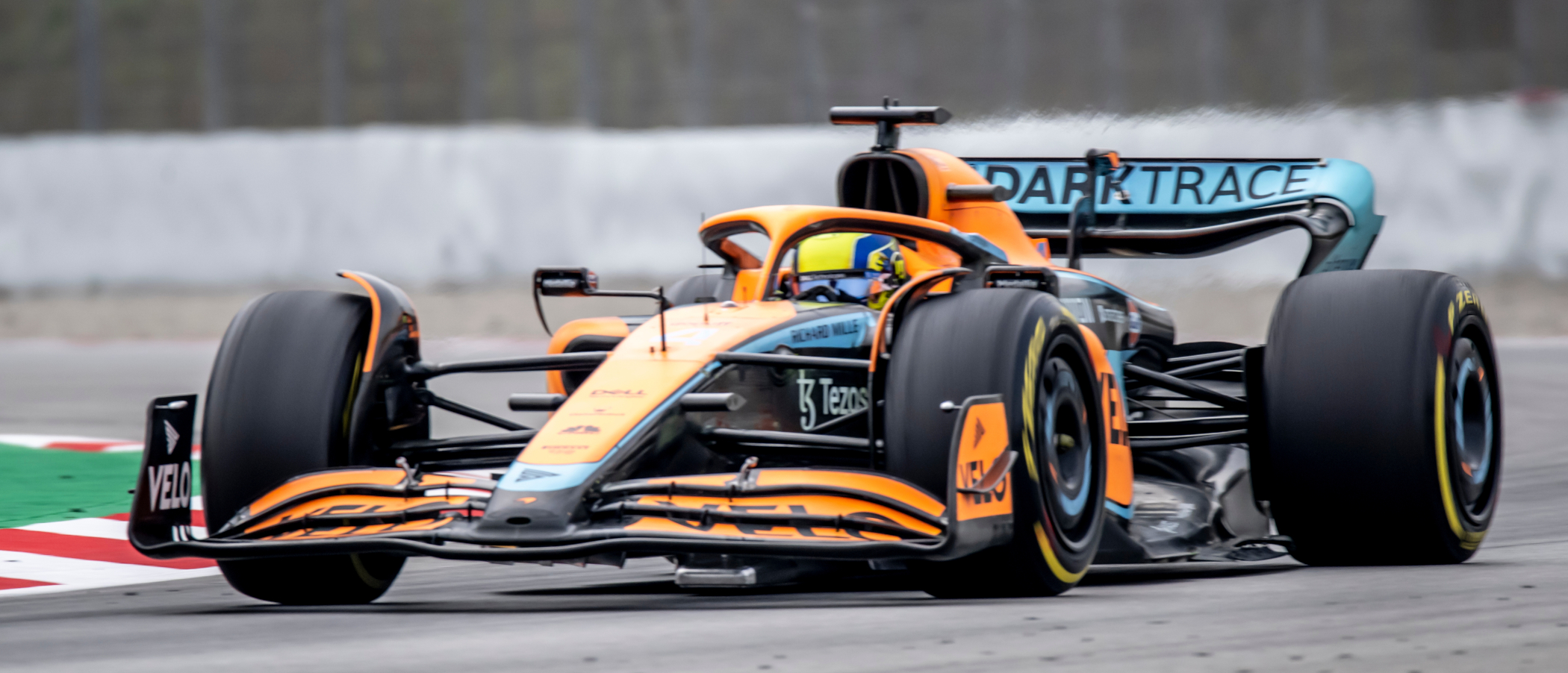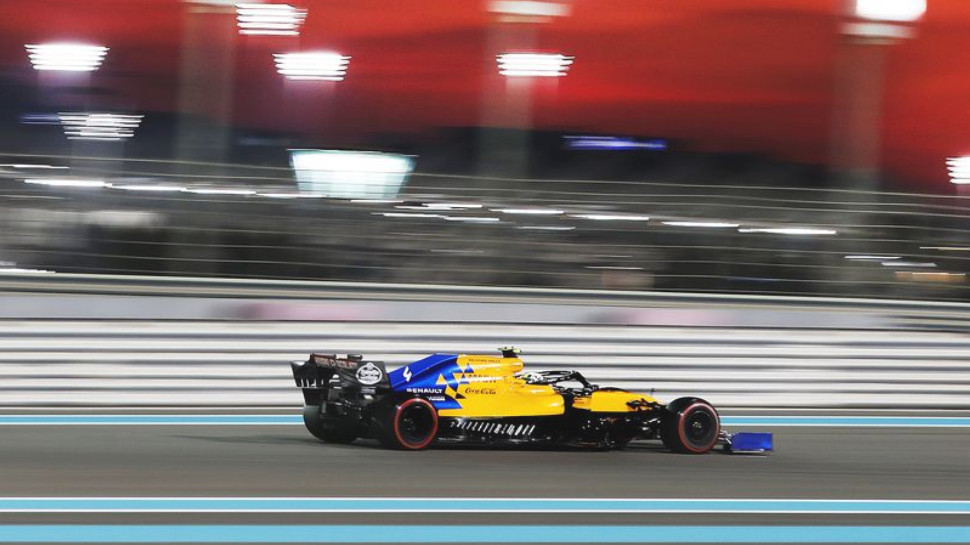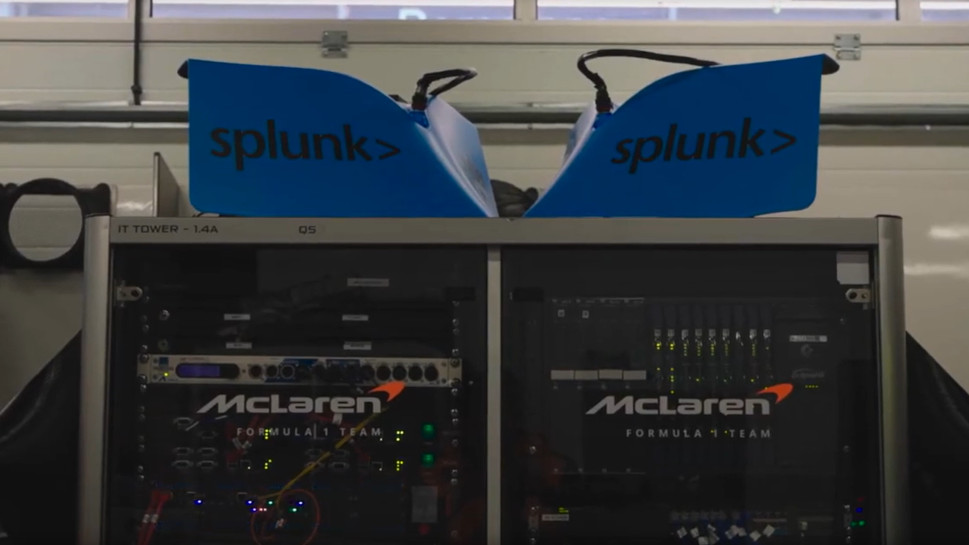How Splunk is helping McLaren F1 navigate the tricky turns of F1 2022
In a season of change, Splunk and McLaren are making every byte count

With the Formula 1 2022 season now well underway, it’s clear that the new rules and regulations have had a significant impact, with some teams struggling to perform, and others streaking ahead.
When it comes to rolling development, and split-second calls that can make or break a race, having the right data is crucial, and so is having the right technology stack to deliver that data exactly when you need it.
Big data experts Splunk have been working with McLaren F1 since 2020, but the 2022 season has taken the relationship to a whole new level as wide-ranging changes have meant data, and the technology behind it, is more important than ever.

The 2022 Formula 1 season has seen teams needing to design, test and race strikingly new forms of car under a strict cost cap, meaning there is even less room for error.
However, James Hodge, Group Vice President & Chief Strategy Advisor at Splunk, tells TechRadar Pro that, in some ways, the new regulations may actually have helped innovation within the sport.
“When we look at McLaren building its Formula 1 car under the cost cap, it has allowed them to make smarter decisions and waste less time and resources,” he said ahead of the Monaco Grand Prix this weekend.
“I think it's been a brilliant positive change because all of the Formula 1 teams have had to look at every dollar that they spend…(the budget cap) has focused the mind.”
Are you a pro? Subscribe to our newsletter
Sign up to the TechRadar Pro newsletter to get all the top news, opinion, features and guidance your business needs to succeed!
The amount of time the teams get to spend on testing has also been cut for the 2022 season, with the importance of limited running time and the data it generates absolutely crucial in order to design a competitive car.
There is so little margin for error, Hodge says, that the teams, “need to know that straight away because every second counts.”
“So if they want to go and do an aerodynamic test run on their computational cluster, they don't want to get to the end of that and find that SQL Server or whatever the database is didn't ingest the data properly or something failed.”
Big (and fast) data
As part of its relationship with McLaren F1, Splunk provides a range of mission-critical services. This includes network monitoring, a vital consideration in a sport where data comes back from the car, through to the FIA organizational body for scrutiny, down to the team’s garage and then from the garage back to McLaren HQ back in Woking, UK - often thousands of miles from the racetrack.
McLaren is trying to move that data back to Woking as fast as possible, and as reliably as possible, Hodge notes, revealing that over the course of a typical weekend, the 300 sensors on a typical Formula 1 car carry out millions of calculations generating around one and a half terabytes.
“You could fit that only big modern-day laptop, maybe,” Hodge notes, “But when you think about the average size of one of those data packets is only a few bytes, you can see the sheer volume of actual data that they have coming back, that they need to make sense of and the variety of the different streams becomes quite complicated.”

Data speeds have become critical, but Hodge notes that the issue is not one of internet connectivity, but rather more to do with physics and the speed of light and sound when it comes to latency.
When the team is racing in a particularly distant location such as Australia, the latency sending data back to the UK is probably in the hundreds of milliseconds, he notes.
“So if there's any delay in that,” he points out, “you're starting to be, maybe a second, two seconds behind what's happening in real time.”
“When a safety car comes out, you probably get a three to four second window sometimes to go make a decision to pit. So, if you've got a delay of people who are working seeing that data by one, maybe one and a half, two seconds, that can have a huge impact.”
This is also an issue in the short free practice sessions held at the beginning of each race weekend, Hodge says, where the teams can gain vital insight into how to set up their cars for a particular track.
Free practice sessions are now only 60 minutes long for the 2022 season, and as Hodge notes, “plugging in” the car and downloading its telemetry after a session takes time, which cuts into potential opportunities to make fixes or improvements that could be the difference between pole position and second place.
“You start to add that up over a year and you're losing a significant amount of practice,” Hodge notes.
“So everything is about, how can you go and get those marginal gains to make all of those types of systems and processes work faster and faster so you can actually maximise the amount of time that car has on the track. To do that, you've got to be able to have complete insight into all of those processes.”
The third car
In effect, the McLaren team’s IT rack is “the third car”, Hodge says, noting that it is so critical to the race weekend, that if the IT rig does not work and the team can't get telemetry from the car, for safety reason the cars are not allowed to start up, let alone go out on the track.
“I think it's the first time really we’ve heard of the IT being that mission-critical, that you can't even start up a car without IT working,” he says.

Many of the changes to Formula 1 this season have come as a result of fans and observers around the world believing the sport had become too stale, the cars too smart and tech-focused.
Hodge disagrees, noting that however much technology goes into the car, there will always be a human element as well: the driver.
“You've still got that factor of not being quite sure what's gonna happen next,” he says, “[the driver] is a person at the end of the day, and no matter how advanced the cars get, I think there'll always be a human in the loop to add that sports factor into it - you still need that skill element to make it sport.”
So in a sport that is undergoing a significant revolution whilst still trying to maintain the drama, the excitement and the danger that has made it so appealing, Hodge says that the need for technology assistance still plays a key role in Formula 1.
“I think the cost cap is starting to show how important digital is in allowing Formula 1 teams to be able to go over maximise any of their investments,” he told us.
“What we're really trying to do is allow McLaren to become agile, so they can go and pivot where they need to get to. And the only way you can achieve that is if you're an operationally resilient business, and that means that you've got to be able to understand all your digital estate is doing, so you can absorb those risks and become resilient to allow your people to have the confidence to become agile.”

Mike Moore is Deputy Editor at TechRadar Pro. He has worked as a B2B and B2C tech journalist for nearly a decade, including at one of the UK's leading national newspapers and fellow Future title ITProPortal, and when he's not keeping track of all the latest enterprise and workplace trends, can most likely be found watching, following or taking part in some kind of sport.